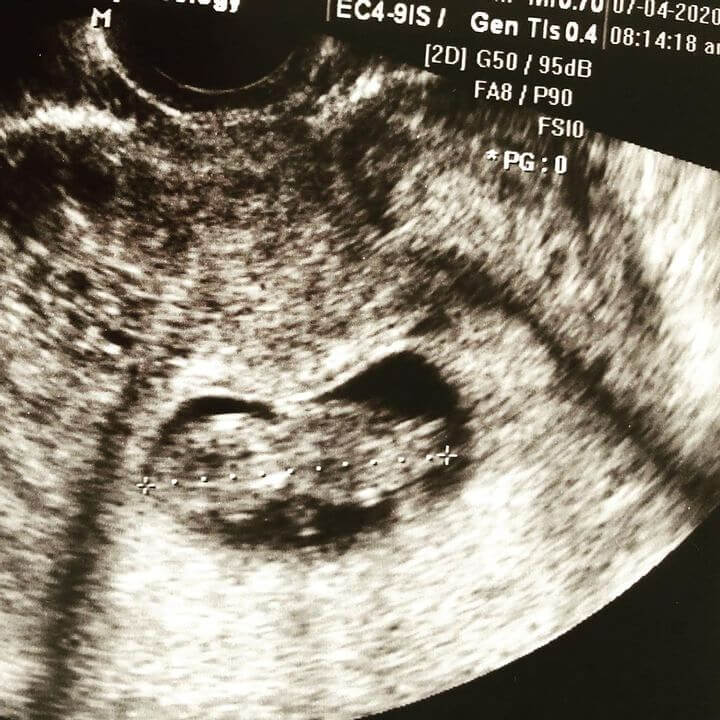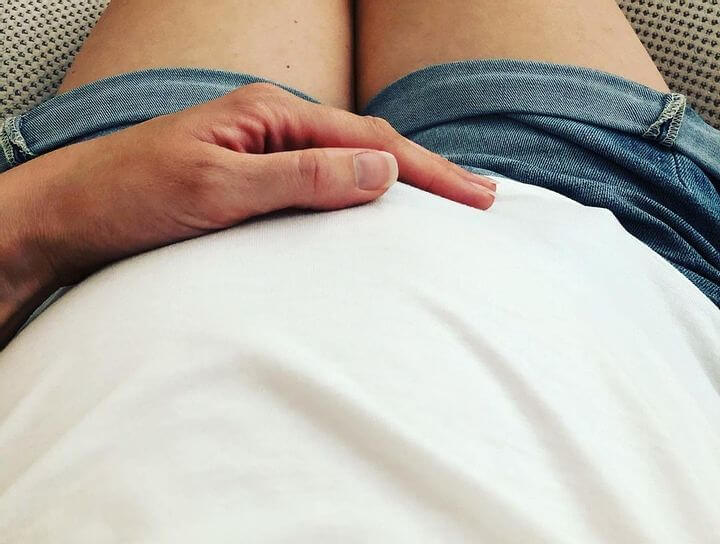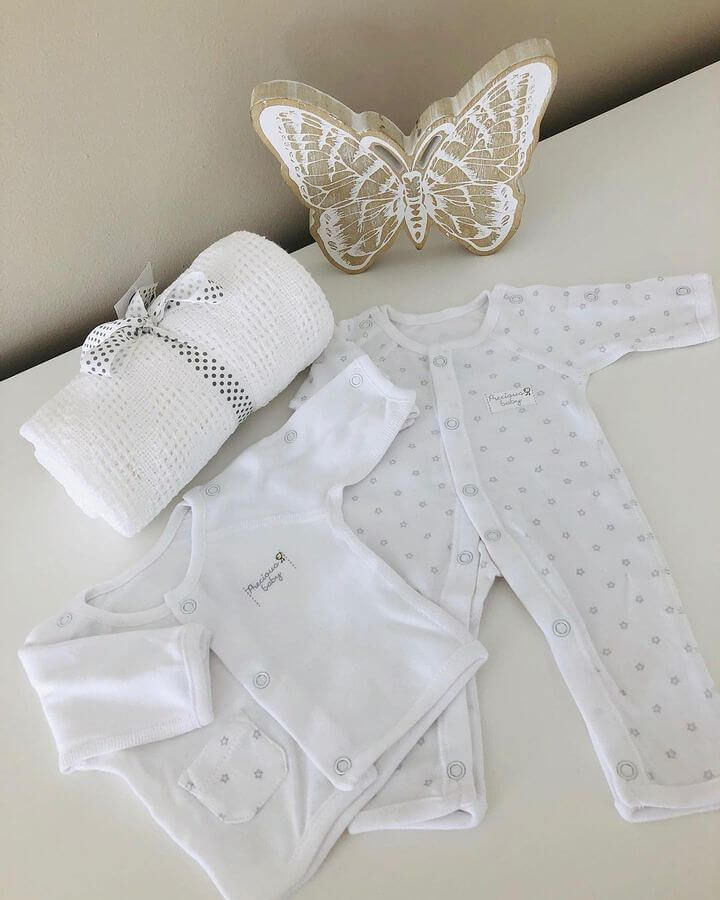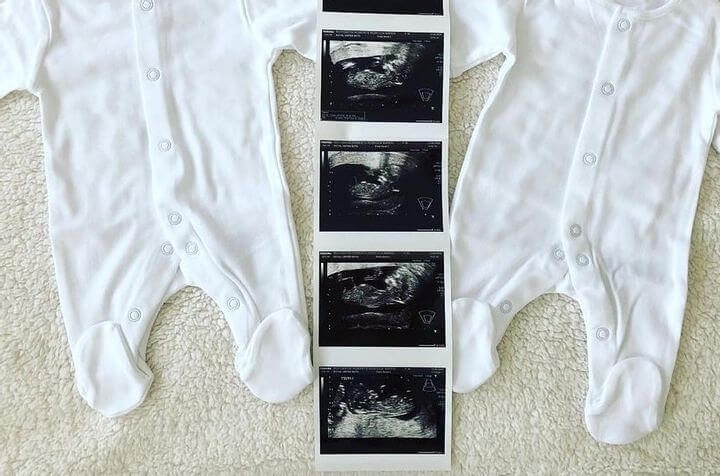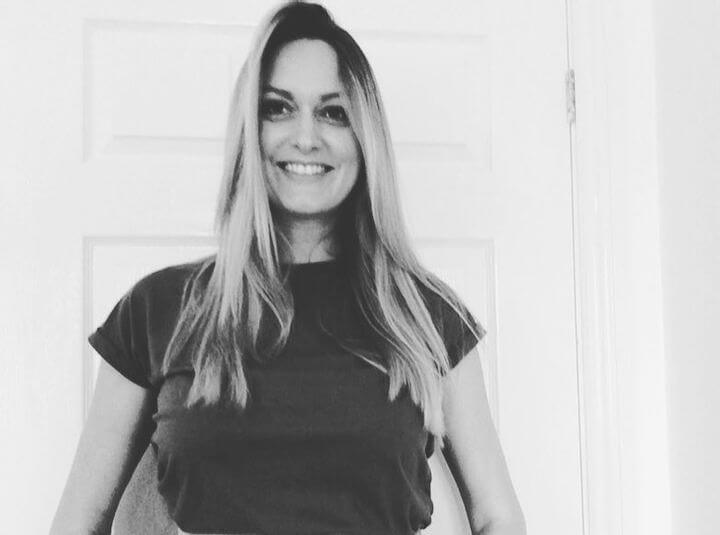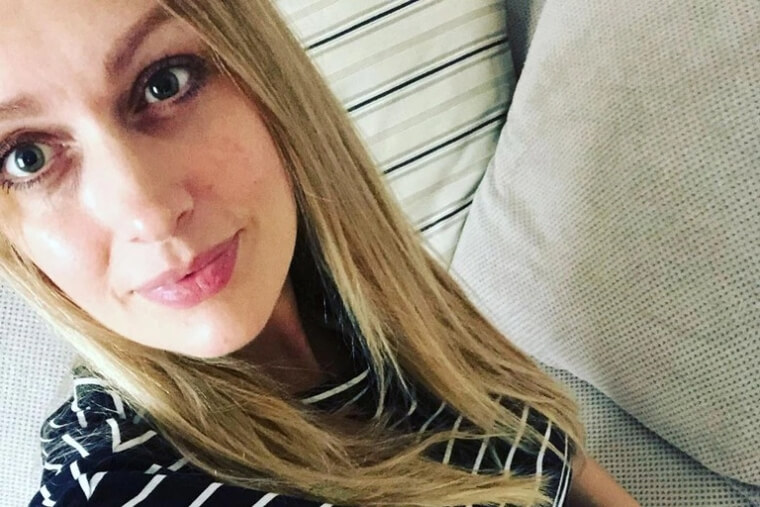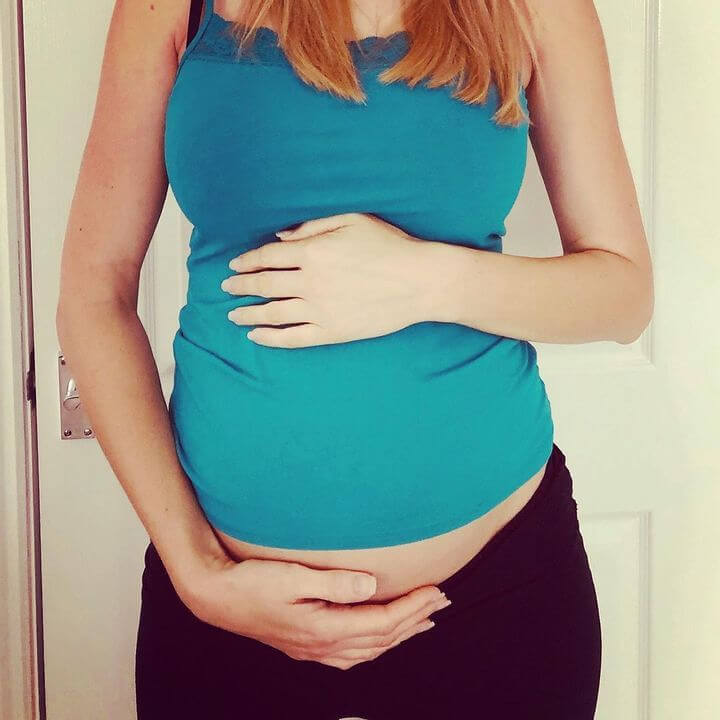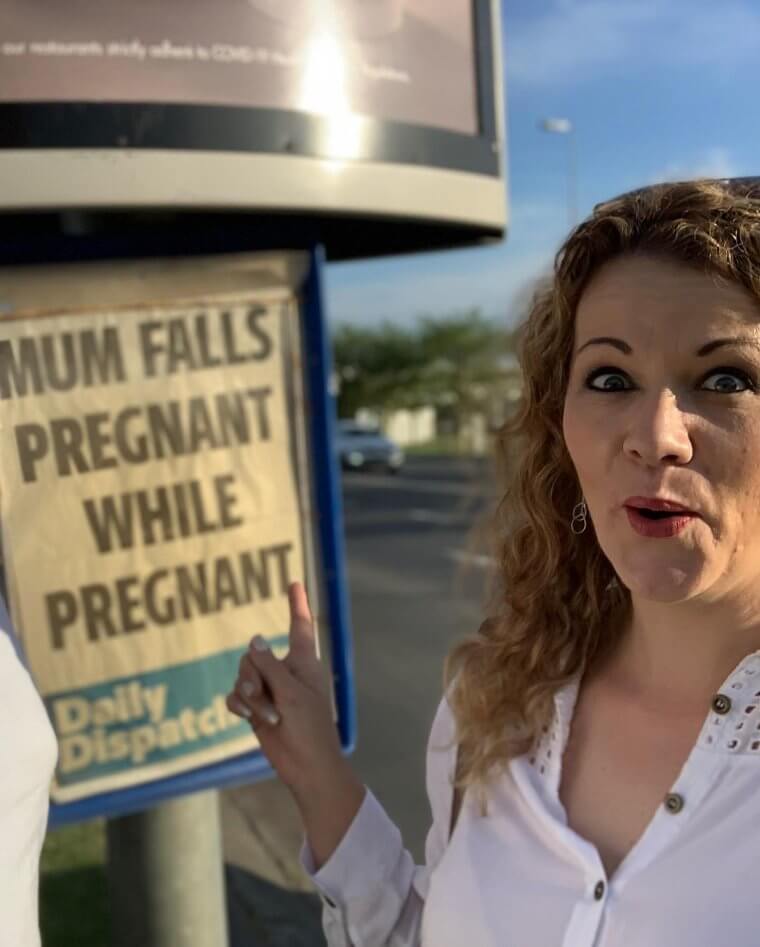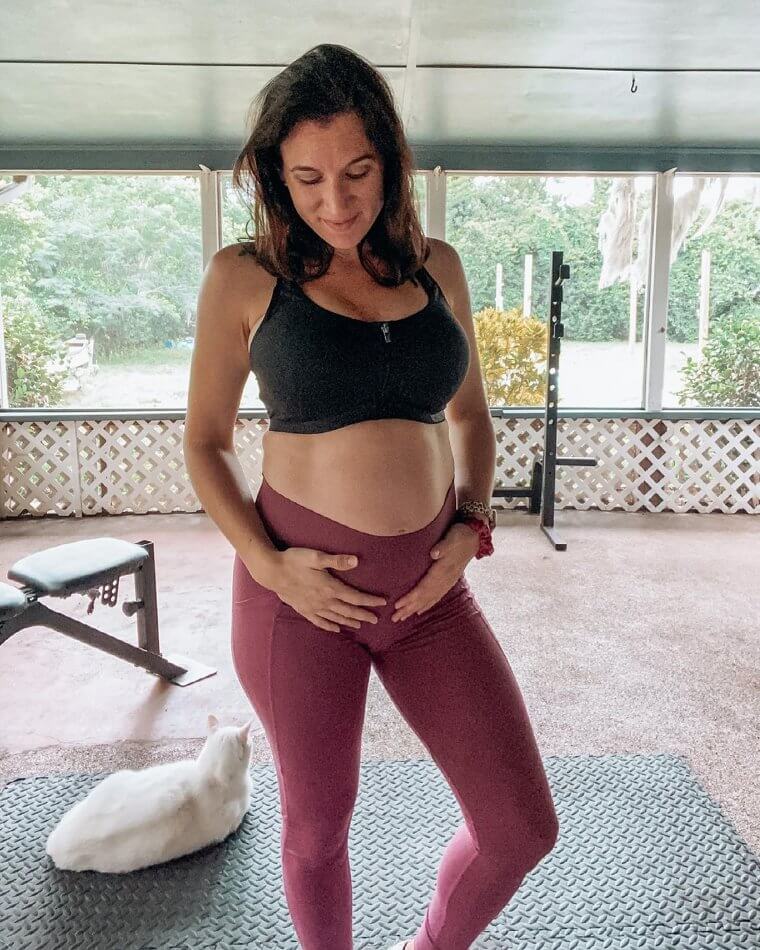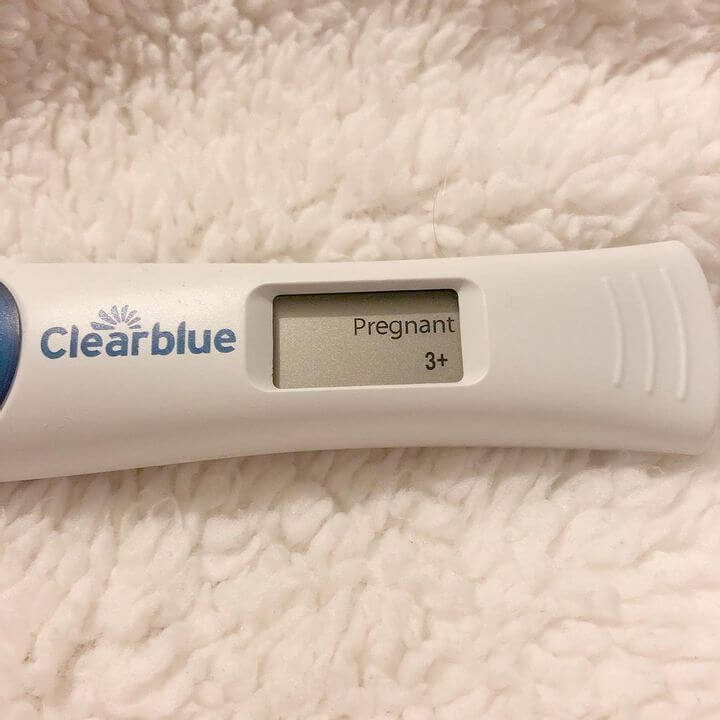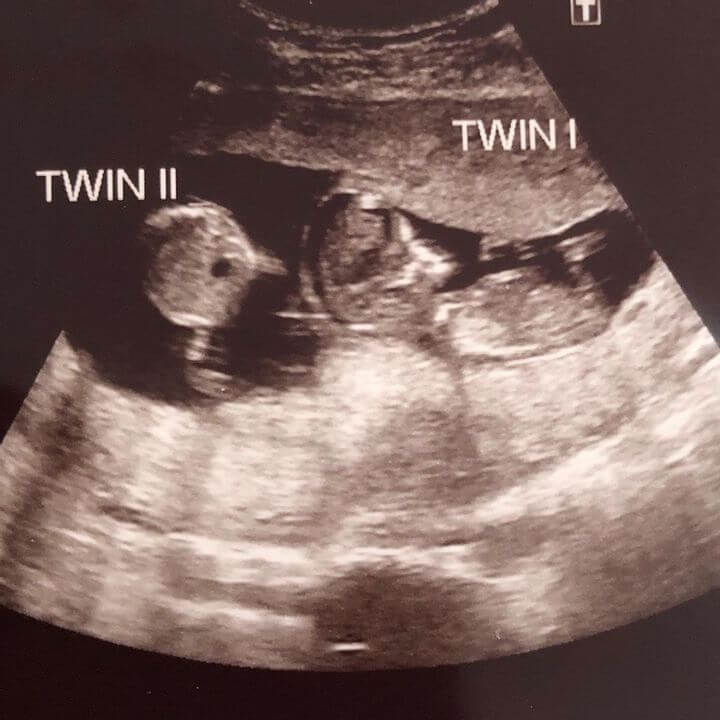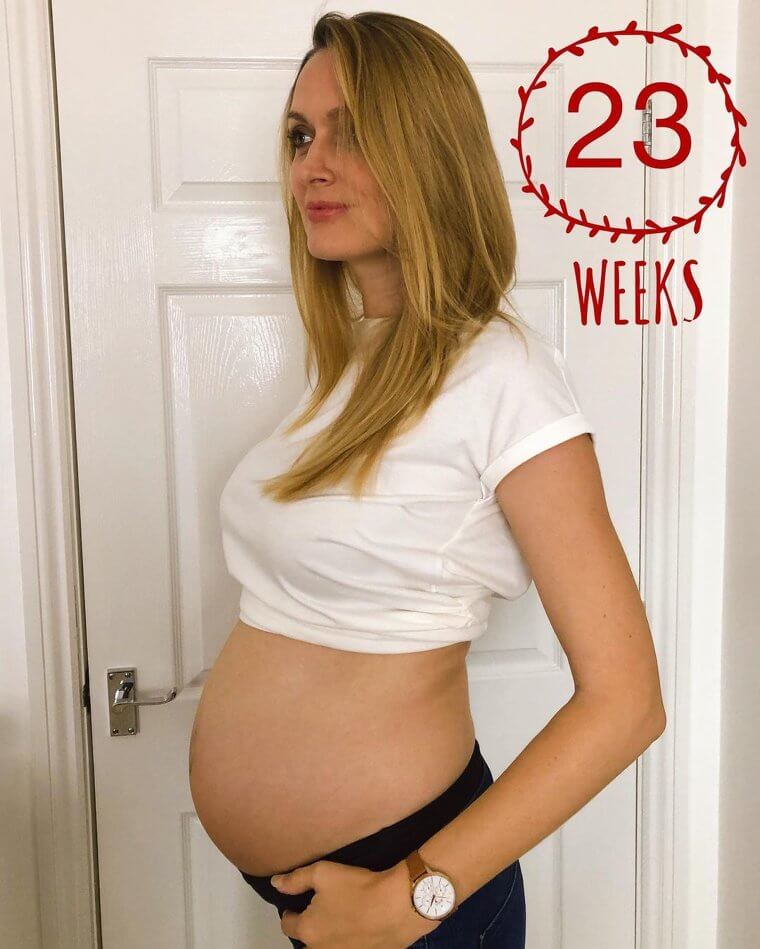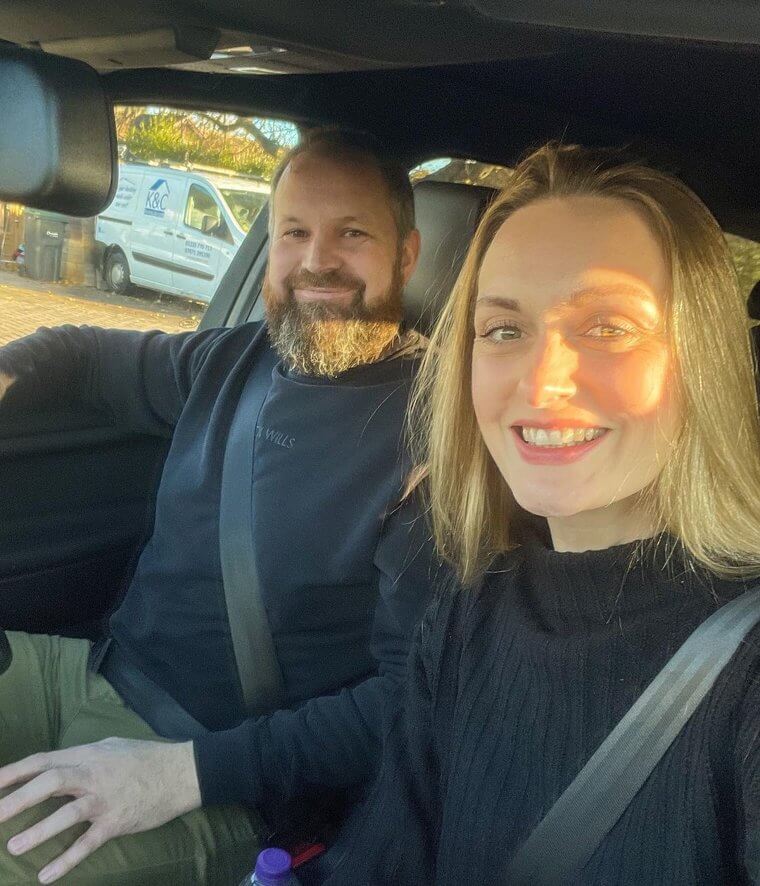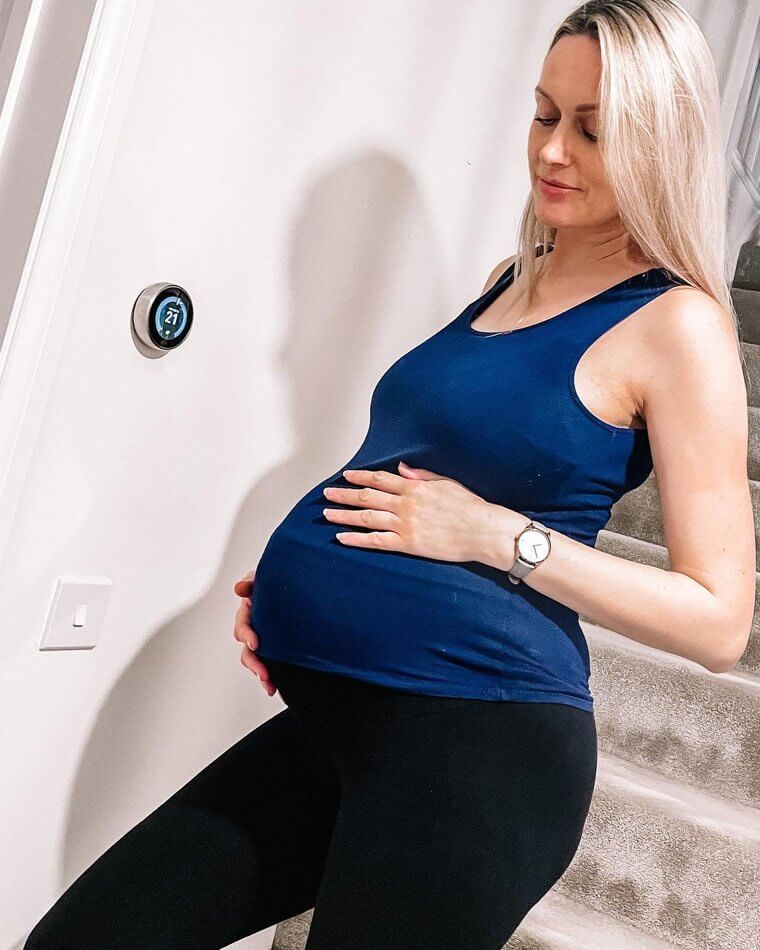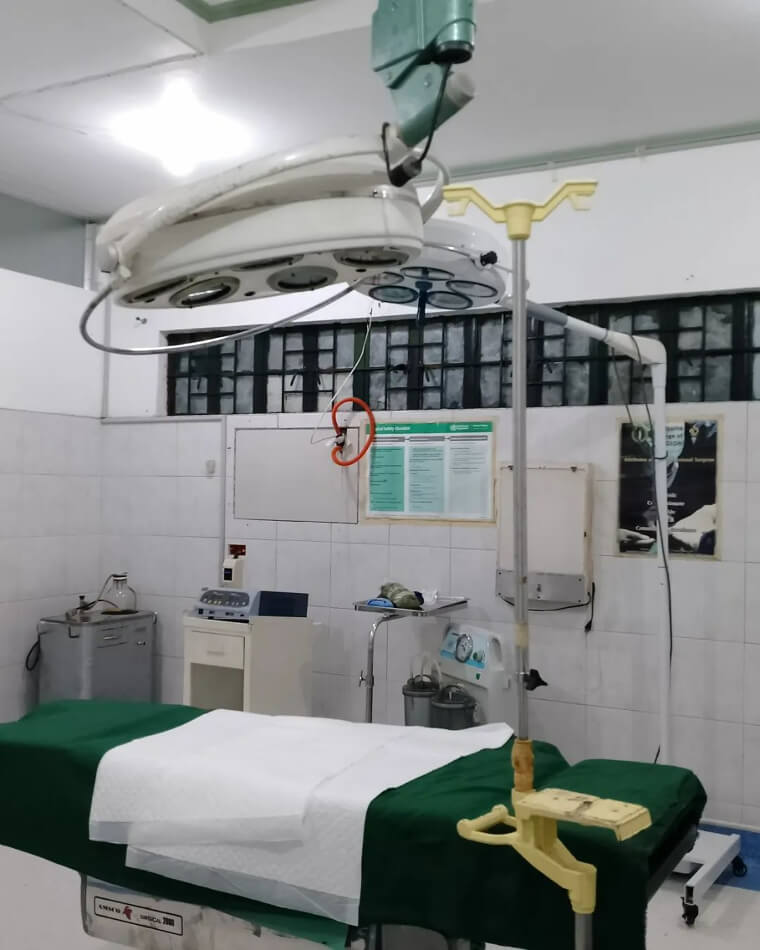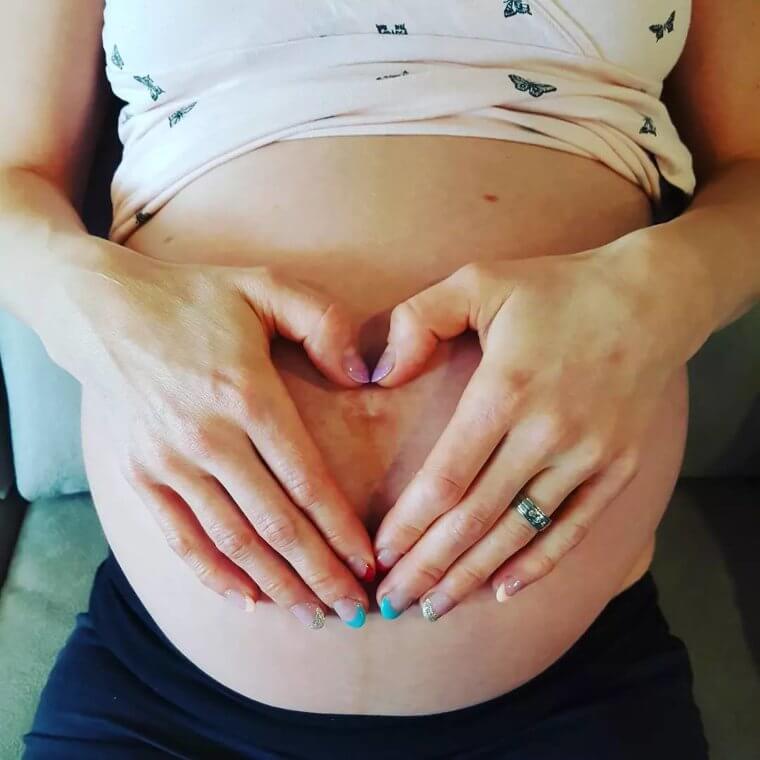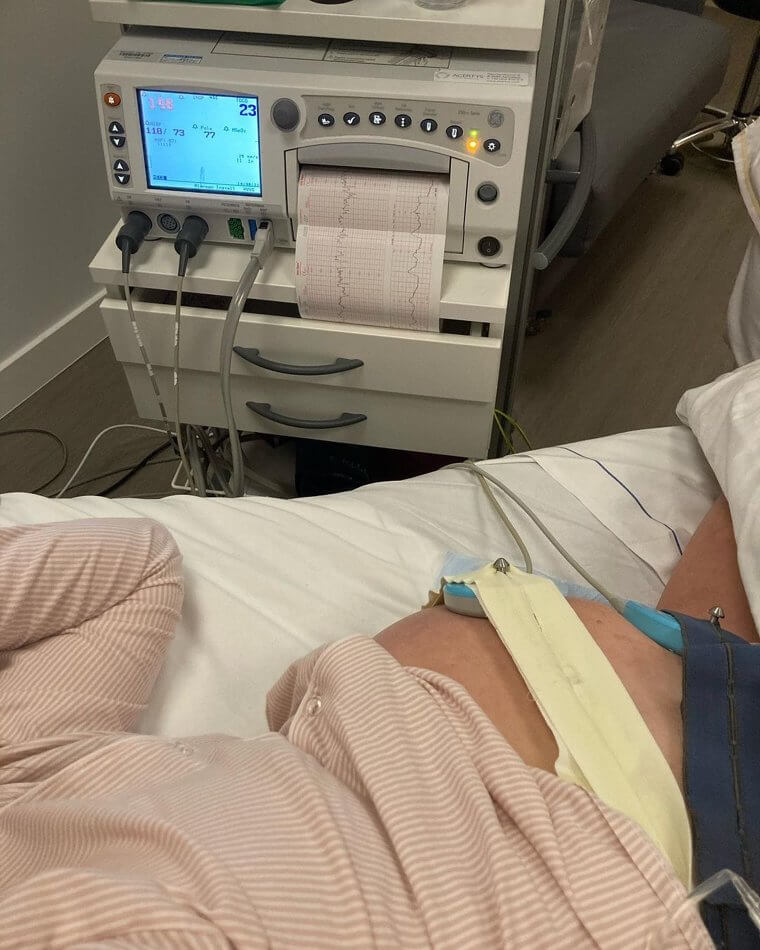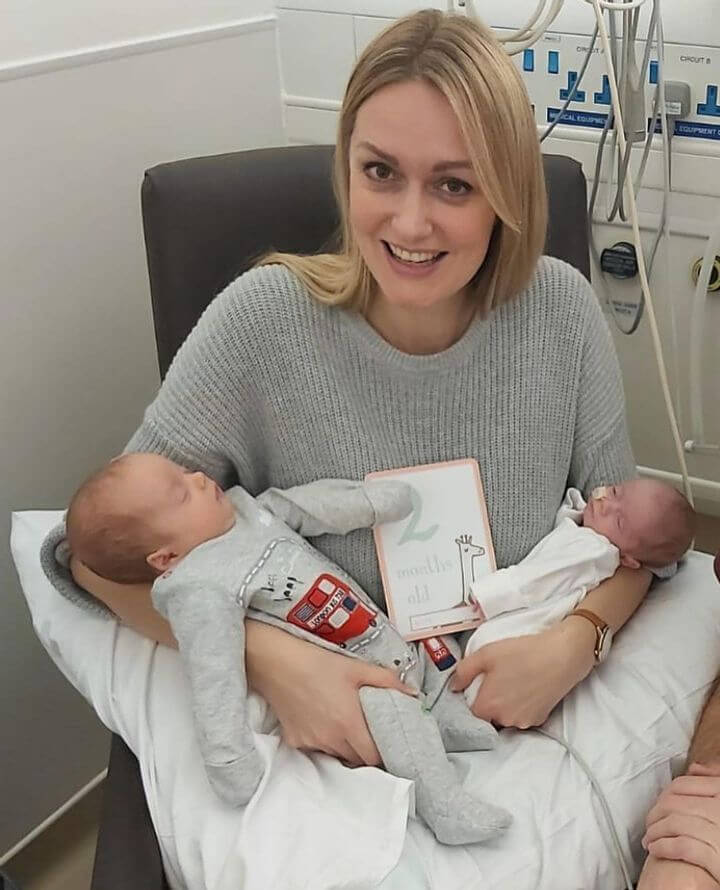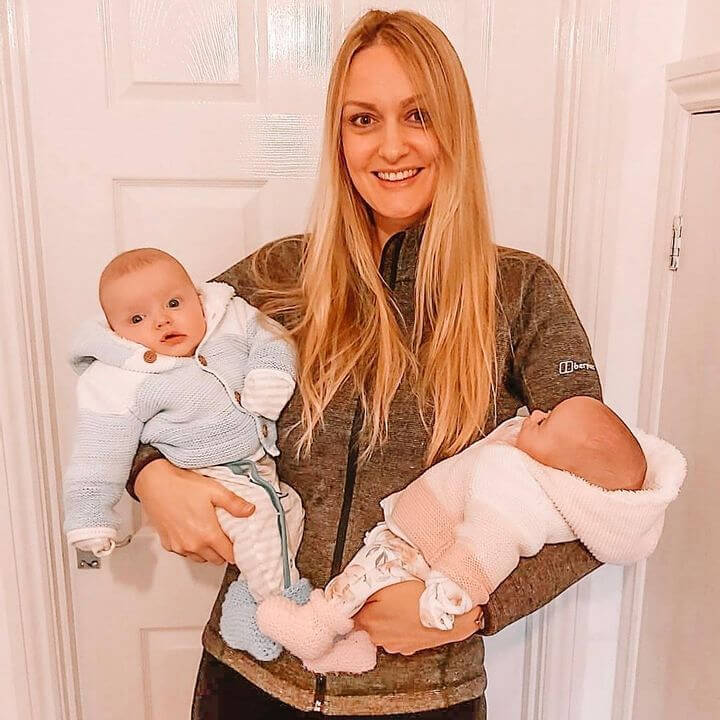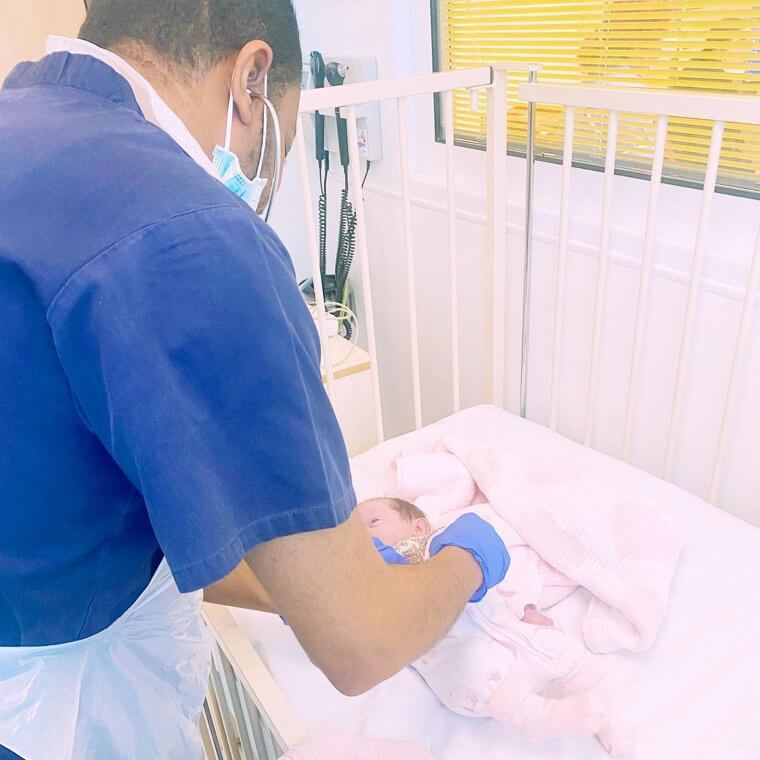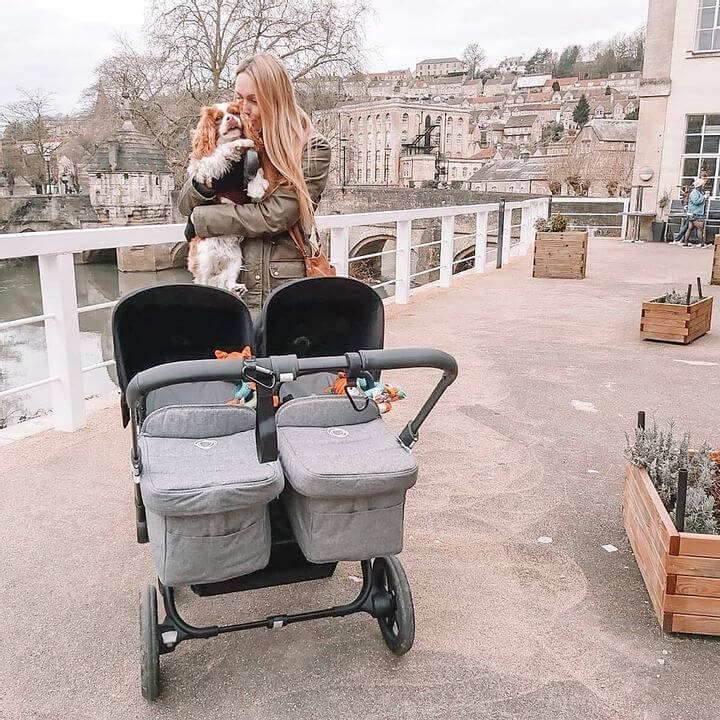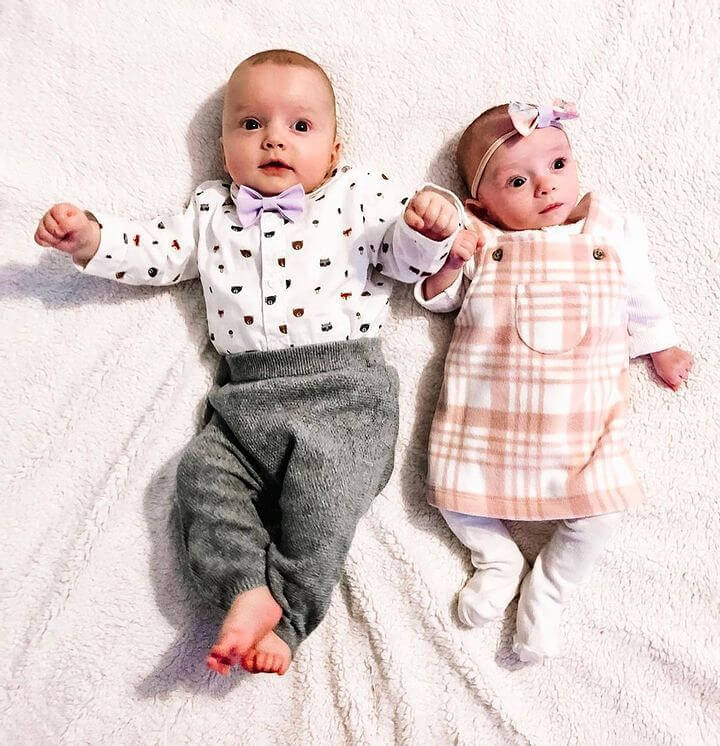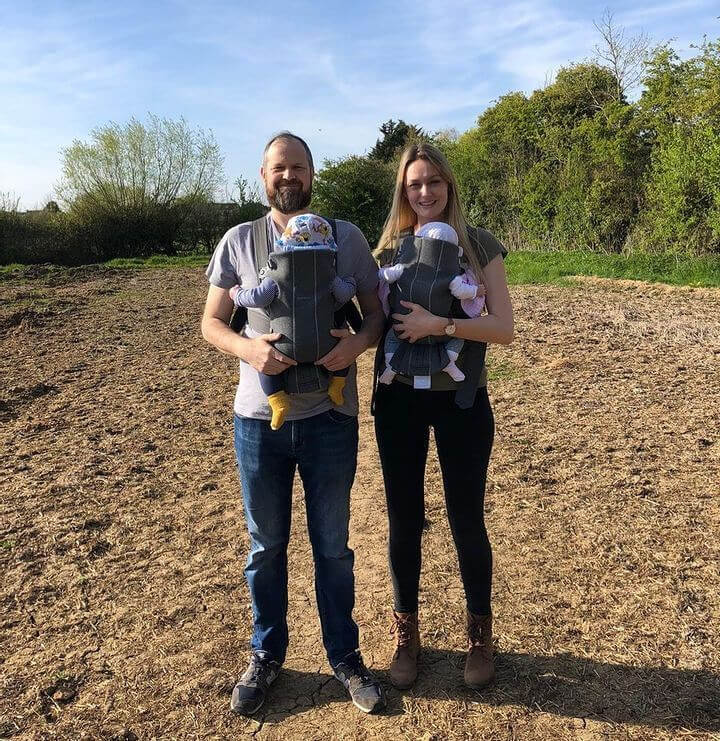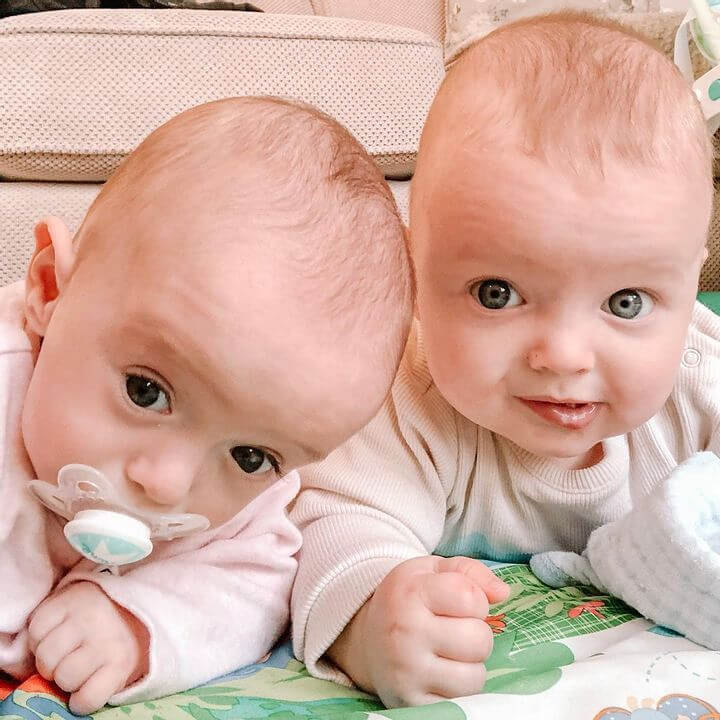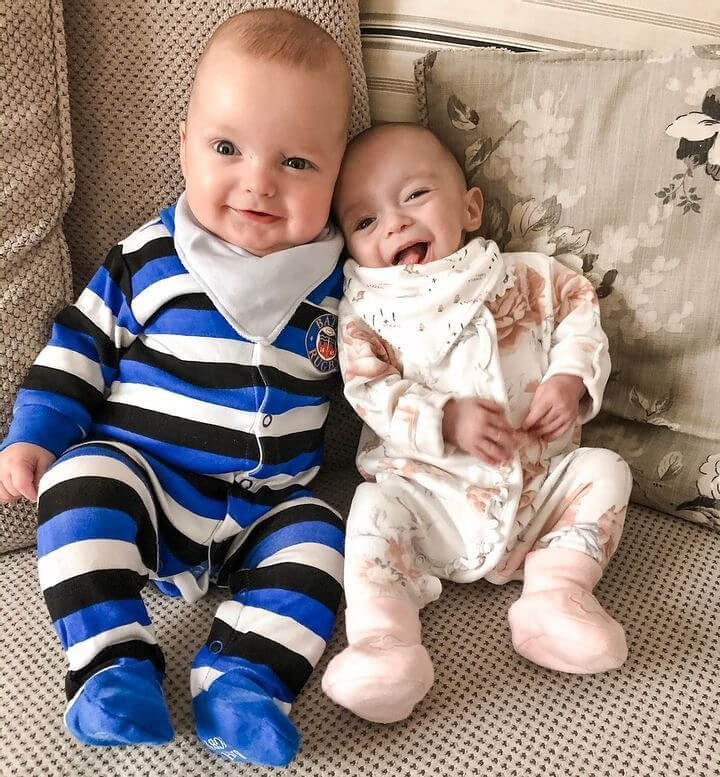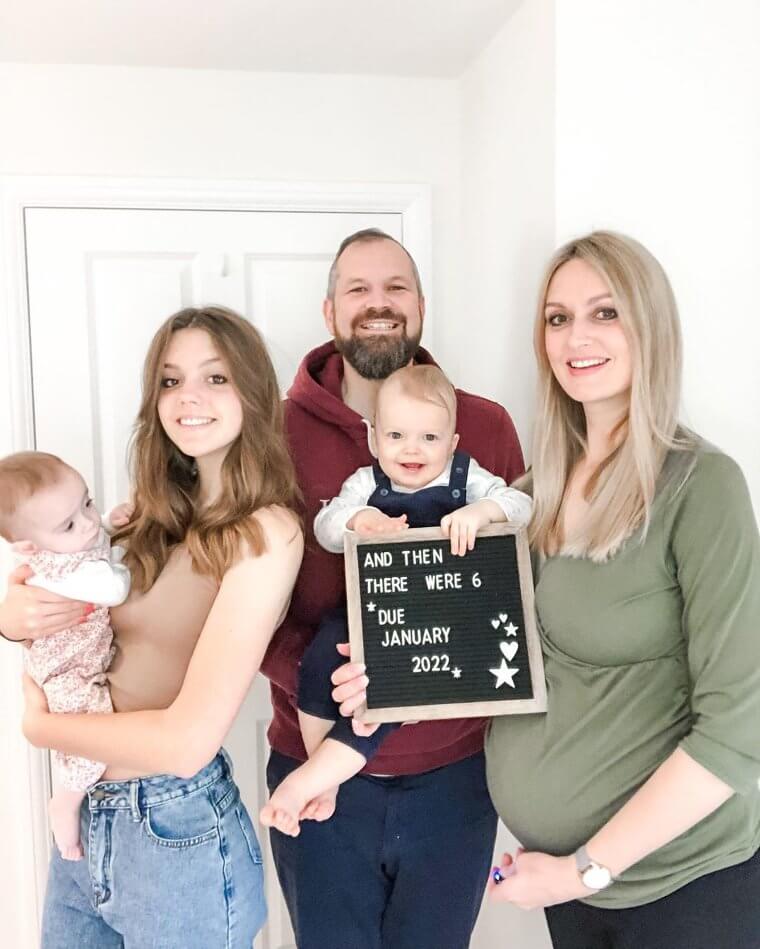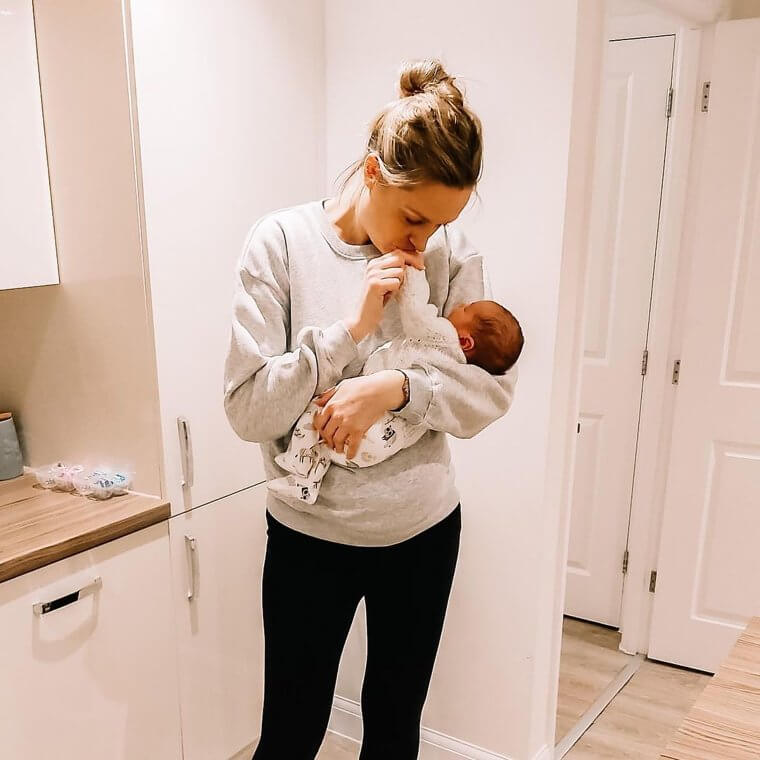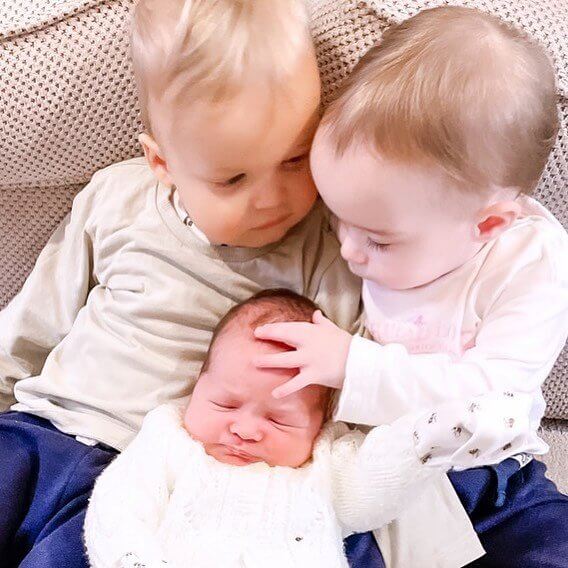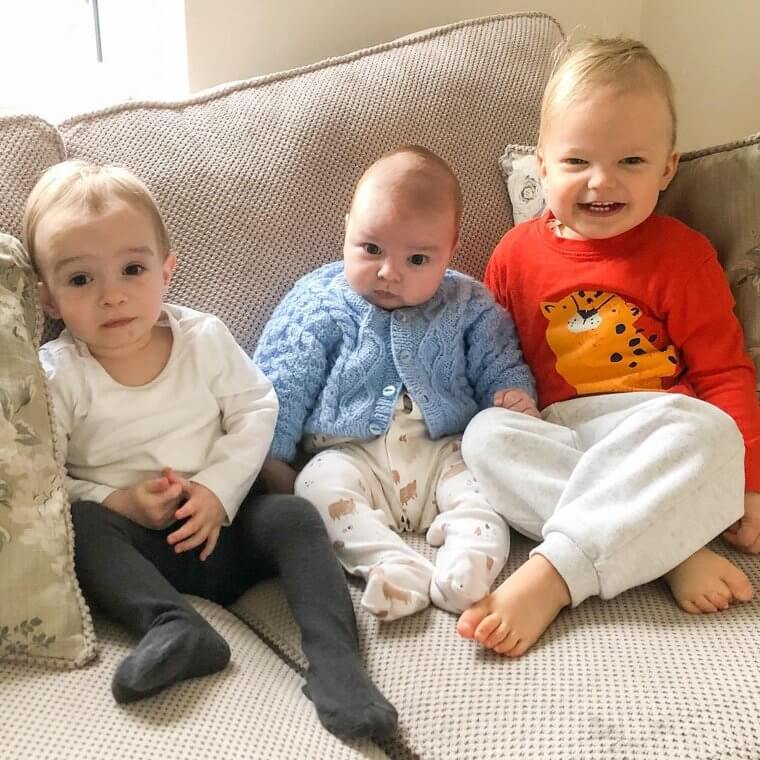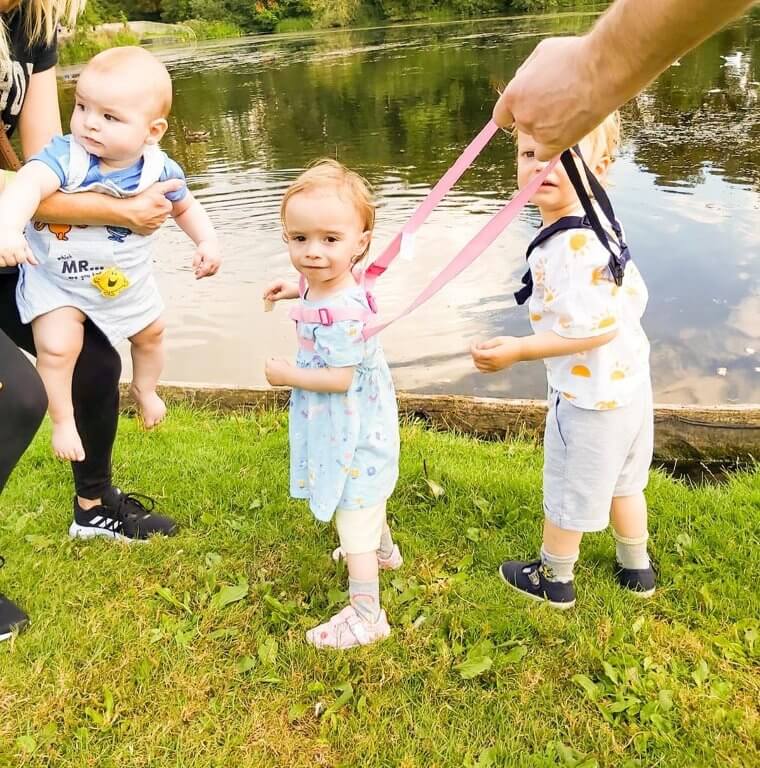This article was originally published on ParentMood
Trying to Start a Family
Rebecca Roberts and her partner, Rhys Weaver, had been trying to have a child for a while. However, they quickly found out that their path to parenthood would be a bit more complex than most had to deal with. Still, they kept trying despite infertility problems and eventually got the happy news that Roberts was pregnant. She and her partner found out right before Covid lockdowns hit the U.K.
Despite the timing, the two were thrilled to finally be well on their way to becoming parents. And it wasn't long before they went to the hospital for their first checkup.
The First Ultrasound
As you might imagine, the two were pretty thrilled when Rebecca had her first ultrasound. And luckily, despite the first months of pregnancy usually being the most nerve-wracking, doctors reported that everything looked normal. The two had a healthy baby, and everything was proceeding as they wanted. They'd had their first ultrasound at around seven weeks, at which point the baby was extremely small, but doctors could still make out a strong heartbeat, and everything looked normal.
However, when Roberts eventually went back for a second ultrasound, something changed that would leave her and the doctors searching for answers.
Feeling Relieved After the First Check-Up
After a while of trying to have a child and coming up empty, the two returned from the first ultrasound with high hopes. They'd finally managed to conceive, and the best part was that everything looked completely on track. In an interview months later, Roberts said, "I remember walking away from the very first scan so happy." However, on her next trip to the hospital, Roberts would get some unexpected news.
Her next ultrasound would reveal something most medical professionals had only read about. And even after seeing Robert's ultrasound for themselves, many would continue to try and come up with alternate explanations.
Things Took a Turn During the Second Ultrasound
When Roberts went for her second ultrasound at the 12-week mark, her partner wasn't able to join her because the U.K. was in the middle of strict Covid lockdowns. Despite all of the restrictions, the pair had managed to start preparing their home for the new arrival. As far as they knew at this point, they were going to welcome a single baby into their home around five months from their second ultrasound.
However, the sonographer suddenly turned silent when she turned to the screen. This would make any about-to-be parent a bit nervous. Roberts suddenly grew worried about whatever the sonographer was seeing.
A Surprise Discovery
It didn't take Roberts long to get an answer from the sonographer. Roberts recalled, "I thought something awful had happened. The sonographer looked at me and was like, 'Do you know you're expecting twins?'" But how was this possible? After all, Roberts and her partner had seen their single baby during an ultrasound only a few weeks before this visit. If there was another baby, why hadn't it shown up then?
That was one of the reasons the sonographer fell silent when she saw the second baby on the ultrasound screen. It hadn't been there weeks before, but it was there now.
Not Your Typical Twins
While the discovery of twins might usually be cause for celebration, there was still the question of where the second child came from. The sonographer also noticed something else strange about the second baby during the ultrasound: it was much smaller than its sibling. So much smaller that everyone, doctors included, had to dig through the history books to find out exactly what was going on and diagnose Robert's pregnancy.
The obvious explanation was that one of the babies was older than the other, but that would mean that Roberts got pregnant twice. Doctors doubted that was the case and began the search for answers.
The Doctors Thought There Was Something Very Wrong
Medical professionals were skeptical that Rebecca had somehow gotten pregnant twice, so they hit the books and racked their brains for explanations regarding the twins' size difference. Their theories ranged from a possible virus to a chromosome problem, and some doctors speculated that maybe the babies wouldn't end up surviving. "Our world came crashing down; I couldn't enjoy my pregnancy at all. All the things you are supposed to enjoy were gone," Roberts said.
It was an expectant parent's worst nightmare. But there was still the possibility that nothing was really wrong and the expectant mom had somehow gotten pregnant twice. But what were the odds of that?
What Is Superfetation?
The doctors knew of cases of women who were already pregnant and became pregnant with a second child at the same time. Named "superfetation," this phenomenon was extremely rare. So, the doctors might be forgiven for thinking that something else was happening with Robert's pregnancy. You could work in the medical field your entire life and never come across a case like this.
But that didn't make the entire process any easier for the parents. "It was like they were trying to prove that something was wrong," Roberts said later in an interview.
Just How Rare Is It?
Cases like Robert's are extremely rare. They're so rare, in fact, that professionals can't agree on just how many cases of superfetation there have been. However, a study by the European Journal of Obstetrics & Gynecology and Reproductive Biology estimated that there were less than 10 cases recorded in the medical journals as of 2008. And that number includes cases from around the world going as far back as records allow.
Of course, after Robert's pregnancy, that number increased by one. But, it just goes to show how rarely superfetations occur and why doctors might pause before issuing an actual diagnosis. The odds simply weren't there.
Why It's so Rare
During a normal pregnancy, women's bodies stop producing eggs. Obviously, that's because she's already pregnant, and there isn't a need for more eggs at that point. However, with superfetation, the body produces another egg even after the first egg is fertilized. "Instead of stopping ovulation, she released another egg about three or four weeks after the first one. And the egg somehow miraculously managed to fertilize and implant in her uterus," Rebecca's doctor, Dr. Walker, explained.
The most extraordinary part about Robert's case might just be that the second egg actually managed to implant itself and develop normally some three weeks after the first.
Was It a Side Effect of Fertility Drugs?
Roberts and her partner had already been trying to conceive a child for a while when she got pregnant. They were even on fertility drugs, which naturally led some people to ask if the superfetation was a side effect of the drugs. However, their doctor said during an interview that he did not believe the drugs caused the second pregnancy as they usually cause a woman to release two eggs at the same time.
Still, Walker also said there was no way of knowing for sure that was the case, despite being "not convinced" the medication had caused the second pregnancy. There simply isn't enough known about superfetation to say for sure, but it isn't included in the traditional side effects associated with the medication.
Going Down In History
Eventually, the doctors involved concluded that what they were seeing was, indeed, a superfetation. But it wasn't without some debate and waiting that they were able to conclude the diagnosis. "We were concerned because the second twin was much smaller. It was only by regularly scanning and seeing that the rate of growth was consistently three weeks behind that we realized it was superfetation," Rebecca's doctor explained.
As you might imagine, this also relieved both doctors and the parents-to-be. They finally figured out what was happening. But that didn't mean the pregnancy wasn't a risky one.
The "twins" Still Had a Dangerous Size Difference
Even though they had an explanation for how there was initially one baby and weeks later two, that didn't mean the babies' size difference was no longer of concern. In fact, that was the main worry the doctors had when they first found out that Roberts was having a second child. Twins are usually the same size, and to have one that's weeks smaller than the other made for a potentially risky delivery.
Thankfully, the second baby was growing at an adequate pace. But it was still smaller - and would probably stay much smaller - than its wombmate.
The Parents-To-Be Had Plenty of Questions and Confusion
"It was a massive shock," Roberts later said about receiving the official diagnosis of superfetation. "We went home and got straight onto Google." That's probably what most people would've done in the same situation - but for once, Google probably didn't have answers to this. The parents had plenty to process: not only were they still digesting the fact that Rebecca was pregnant with not one, but two babies, but now they had to process how unique their babies were.
They weren't your average twins; after all, the babies were actually conceived weeks apart from one another. They were more like siblings that were just going to be delivered at the same time.
Searching for Answers and Coming up Short
Remember when we said finding concrete information about superfetation online would be challenging? Well, that was precisely what Roberts and Weaver found when they got home and tried searching for answers to their confusion. "There is very little information because this is not supposed to happen. It was just crazy news," Rebecca said. The only thing their searching did was prove just why the doctors had such a difficult time diagnosing their pregnancy as a superfetation.
Still, that didn't mean that the two weren't super excited about the news. In fact, as time went on and the news started to sink in, they both began to realize just what this meant.
Rebecca Was on a Rollercoaster of Emotions
After the long struggle to conceive a child, the couple was told that they were now going to have two. Not only that, but their pregnancy would be going down in the history books because it was simply so rare. As you might imagine, the days after the news, and the whole process in general, was quite stressful. However, after the news sank in, the expectant parents began to digest everything that was happening.
After their long struggle, they were going to have two children. Only months before, they would've considered themselves lucky to ever be able to conceive a single child.
Trying to Keep Calm and Carry on
Even under regular and more predictable circumstances, finding a second child that's much smaller than the first would cause some alarm. So dealing with a case that was so rarely seen made things even more complex. But Rebecca and her hubby decided to look at the glass half full; they enjoyed the pregnancy was much as they could and set their eyes on the finish line. They were determined to make it.
So they continued prepping the nursery, nesting at home, and sharing ultrasound photos with family. But the most nerve-wracking part of all was probably planning the delivery - would both babies make it?
The Time of Delivery Could Be the Difference Between Life and Death
Even though both babies were developing on schedule and looked healthy, something was still looming over everyone's heads. Despite the development difference, they'd have to be delivered at the same time. This meant the doctors had to get the timing more than right. "Anything that can go wrong with a pregnancy is more common with twin pregnancies," Walker said in an interview. "But with a three-week difference, you don't want to compromise the smaller twin by delivering too early. You have to keep a really close eye. The delivery was crucial in this case."
This meant that the couple was very much aware that there were big risks involved with delivery, which certainly didn't make the latter stages of the pregnancy any less stressful.
The Parents Were Massively Worried
As the months crept up on them, both parents had the fact that the delivery had to be timed just right in the back of their minds. "It was a really massive worry for us," Roberts said about going into labor too early. If they delivered too early, then there was a greater risk that the younger child wouldn't be fully developed. However, there's only so long you can wait to give birth.
The body isn't built to give birth to two children of different ages. It's not like it's just going to wait until it's as safe as it can be for the second child.
Umbilical Cord Trouble Forced Her to Go Into Labor Before the Planned Date
It turned out that Robert would end up delivering before the planned date. The two parents had been waiting for months during what we can only imagine were both stressful and joyful days. However, doctors found that there was something wrong with the second baby's umbilical cord at around the 33-week mark. There was some kind of complication that was interfering with the younger baby's development. The doctors had no choice at this point.
Time had run out, and they'd have to deliver both babies as soon as possible. Not doing so might mean the younger child would've been at risk of serious harm.
Meet Noah and Rosie
After months of surprises and stress, it was finally time to deliver. Doctors had to perform a c-section since both babies had different due dates. And thankfully, everything went as planned. Doctors delivered the older baby first, a boy named Noah, who weighed around 4 pounds and 10 ounces. Then, it was time to deliver the younger sibling, a girl named Rosie, who weighed in at around 2 pounds and 7 ounces.
Both babies were healthy, and all those months of worrying were finally over. Now came the easy part - or so the parents thought.
But They Couldn't Go Home
Like any new parents, Roberts and her partner were ecstatic after the birth of their two children. Everything had gone to plan, and the two were eager to get their two bundles of joy home. “We got to see both of them as soon as they were born. It was absolutely beautiful,” Roberts later said in an interview. Her partner described his feelings after the successful deliveries as one of the best feelings of his life.
However, despite the successful delivery, the two babies weren't entirely out of the woods and would need to spend more time being cared for and monitored at the hospital.
Rosie Had to Stay at the Hospital for Over 3 Months
Despite the delivery going well, both babies were born before their due dates. This meant they both needed to stay at the hospital for further observations and care. They were both taken to the Neonatal Intensive Care Unit shortly after they were delivered. The older sibling, Noah, would end up staying there for three weeks. The younger sibling, Rosie, had to stay there for a little over three months.
Still, the parents said that they drove by the hospital every single day that they were there. And their wait would finally be over just in time for a special holiday.
Going Home Just in Time for the Holidays
After months of uncertainty leading up to the birth and then more months of angst while their babies were staying in the care unit, Roberts and her partner finally got word that it was time to take Rosie home. And the news came just in time for the Christmas holiday, meaning they'd all be able to spend their first Christmas together as a family. "We could finally get on and start our lives. It felt like we were on hold having them in the hospital," Roberts said.
The next part of their journey was one that most parents are all too familiar with, which was taking the newborns home and caring for them. However, their case was a little different than most.
Each Baby Had Very Different Needs
Not only were the two new parents taking home and caring for two newborns, but they were doing it during the middle of Covid lockdowns. As if taking care of one new baby isn't difficult enough, they would be forced to navigate the lockdowns while taking care of twins. Still, like anyone who has a child for the first time, they were forced to adjust quickly to their new roles.
Since both babies were different ages and at different stages in their development, adjusting came with some caveats, and they quickly learned that it wouldn't be the same as caring for twins.
Same Birthday, Different Ages
You might be able to call the siblings twins, but that doesn't necessarily mean that they are. Both babies are different ages despite being born on the same day. This meant that they both develop in different ways, and Roberts has said as much during interviews. She has noted that there is definitely an age difference that's pretty noticeable between the two, and this extends beyond their different sizes, which are pretty apparent just from looking at them next to one another.
Weaver, the father, has said that Rosie is still at an earlier stage in her development, but he's also noted that the younger sibling is catching her to her brother fast.
Sibling Bonding
Despite their differences in size and age, the two siblings still share a really strong bond, according to their parents. “When we lay them down next to each other on their play mat, they look at each other, reach out and touch each other, and talk to each other as well. It is so beautiful to watch,” Roberts said. That just might be the most adorable thing about having twins.
And the two parents were about to find out that a lot of other people thought so as well. This, combined with the fact superfetation is so rare, probably contributed to the next part of the couple's journey through parenthood.
Telling Their Story
After searching for information about superfetation online and coming up almost entirely empty-handed, the two parents decided to tell their story and bring more awareness around superfetation and what it actually means. So, they launched an Instagram page they still regularly update called Roberts.supertwins. The account shares photos of the twins, scenes from during Robert's pregnancy, and updates on how the siblings are doing. The two probably expected to get a few hundred followers.
However, little did they know that their story was going to attract a ton of attention from people interested in what it means to have twins that are of different ages.
Garnering Attention on Social Media
We're sure that Roberts and her partner didn't expect to receive a ton of support and feedback when they first shared their story online. At least not to the degree that their story has garnered. Today, their Instagram page has around 76,800 followers, and that number is only growing. People from around the world follow the page because the story inspires them for all kinds of different reasons. Some might be able to relate, while others simply love hearing a feel-good story.
It also doesn't hurt that it's an Instagram page devoted to photos of adorable babies. Still, the two could've easily chosen another route and never started the page at all.
Keep Quiet, Or Go Public?
After everything they'd been through, it would've been much easier for the couple to not tell their story and instead continue living their life normally. After all, the couple had tried for so long without success to have a child, and some might consider keeping their struggle a secret. However, that also would've deprived thousands, some of whom might be in a similar situation, of hearing the couple's inspirational story.
The couple has said that they wanted to share their story in order to inspire others and show that "Miracles can happen," according to Roberts. They've also noted that they have received overwhelmingly positive support since telling their story to others online, which is really heartwarming to see.
The Family Continues to Grow
You might think that after all the time the couple spent trying to have a child, Noah, and Rosie would be their first and last children together. However, that wasn't the case, and the two announced not long ago that Roberts was once again pregnant. When Roberts made the announcement, she said that she was 29 weeks pregnant at that point. They would end up naming the new addition George.
Oh, and Roberts also said that they got the doctors to double-check and ensure that they would only be having one child this time around.
Welcome, George!
In a departure from her last pregnancy, the birth of George was pretty routine. The proud parents welcomed George on January 21, 2022. This would be their third child together and their fourth child in total. Roberts posted on her Instagram that "He's made Summer and Rosie proud big sisters and Noah a proud big brother." The couple has come a long way from struggling to have their first child together.
Plus, they now have a super interesting story that is a sure conversation starter wherever they go. After all, who can actually say they experienced superfetation? According to medical journals, less than 10 people have throughout recent history.
The Age Differences Always Catch People off Guard
Imagine having to explain to someone that you just met that all of your children are different ages and that your twins aren't technically twins at all. Despite having the same birthday, they're totally different ages. We imagine it comes up just about everywhere they go, but especially during birthday parties. There are probably more than a few confused looks after the parents finish explaining their story to people.
We're sure there are also some people out there who simply can't believe it, considering there still isn't much information widely published information on superfetation and all that it entails.
A Special Bond
Without a doubt, one of the best parts about being a parent to multiple children is watching them bond and grow together. And, like with any set of children, there are going to be some growing pains. Roberts has talked about watching all of her children bond together. "I mean, it's not always butterflies and rainbows. Sometimes the twins aren't sure why George is still here, sorry kids, he's here to stay," she posted to her Instagram.
However, she quickly clarified that all of her children are getting used to the new addition and growing more attached to their new sibling. Rosie has even stopped poking George.
The Adventure Is Only Beginning
In one of her latest posts, Roberts gave a life update, saying that she was still "living in leggings" after giving birth to 3 children in 16 months. Like any baby, most of the looks on George's face are either looks of confusion or smiles. He's also pulling himself up on the sofa, and Roberts predicts that it won't be long before he's walking upright by himself. All in all, they're now one big happy family.
As for if they plan on having any more children, we guess we'll just have to wait in see. Nothing should come as a surprise after seeing this couple's amazing story.

